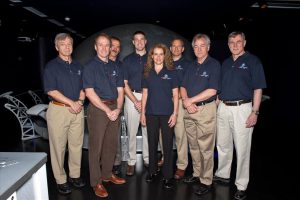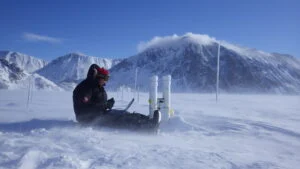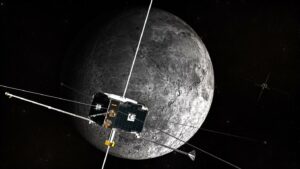
Exploration
Canadian Space Agency astronaut profiles
The men and women that have become part of Canada’s space team
- 1067 words
- 5 minutes
Science & Tech
From a lunar flyby to an ice-seeking “microrover,” Canada is set to play a leading role in the next phase of lunar exploration

Humans last walked on the surface of the Moon 50 years ago this week, during the Apollo 17 mission. If you have been watching the news over the past month, you’ll have seen that NASA recently took the first major step in returning humans to the Moon with the Artemis I mission. Launched on November 22 on the new Space Launch System – the most powerful rocket ever built – the uncrewed Orion spacecraft spent 28 days in space before splashing down to Earth on Dec. 11.

So what does the success of Artemis I mean for Canada? While led by NASA, it is important to note that the Artemis Program is very much an international endeavour, carrying on the spirit of the International Space Station. Canada has been a member of the Artemis Program from the very beginning, ensuring our place at the table as humanity embarks on a new era of exploration of our closest celestial neighbour. Indeed, one of the most exciting achievements for the Canadian space program is that we have secured a seat for a Canadian astronaut on the next Artemis mission, scheduled to launch in 2024. Artemis II will mark the first time in 50 years that humans will return to the Moon – not to the surface, but in a flyby manoeuvre analogous to what the first Apollo mission to the Moon, Apollo 8, did in 1968. This will be a critical milestone before humans return to the surface of the Moon on the subsequent Artemis III mission.
In the meantime, there are lots of activities happening in Canada related to the robotic exploration of the Moon. A major contribution announced earlier this year is the development of Canadarm3. This next-generation robotic arm – being developed by MDA – will be mounted on the Lunar Gateway, which is essentially a small space station that will orbit the Moon.

Less than a month ago, the government also announced that Canadensys Aerospace Corporation had been awarded a contract to develop Canada’s first ever lunar rover mission. I have the honour of being the Principal Investigator for this mission, which will see a 30-kilogram “microrover” go to the south pole region of the Moon in 2026 to explore its geology and search for water ice. As a nation with such a large part of our geography above the Arctic circle, it seems rather fitting that Canada’s first planetary rover mission will be to the south polar region of the Moon – where no human or robot has ever been before.
As we enter this new age in the exploration of the Moon, I also hope that the perspective that we gain will also serve to remind us that our “Blue Marble” is our only home in the vastness of space and one that we must preserve and protect.
Are you passionate about Canadian geography?
You can support Canadian Geographic in 3 ways:

Exploration
The men and women that have become part of Canada’s space team

Science & Tech
Celebrating Canadian Innovation Week 2023 by spotlighting the people and organizations designing a better future

Exploration
With interviews from Chris Hadfield, Marc Garneau, Roberta Bondar, and more, Canadarm and Collaboration is the tale of Canada’s involvement in international space exploration from the 1960s to the present day

Science & Tech
Hansen will be part of the NASA crew for Artemis II, which will see the astronauts spending up to three weeks on a flyby trip to the moon in 2024